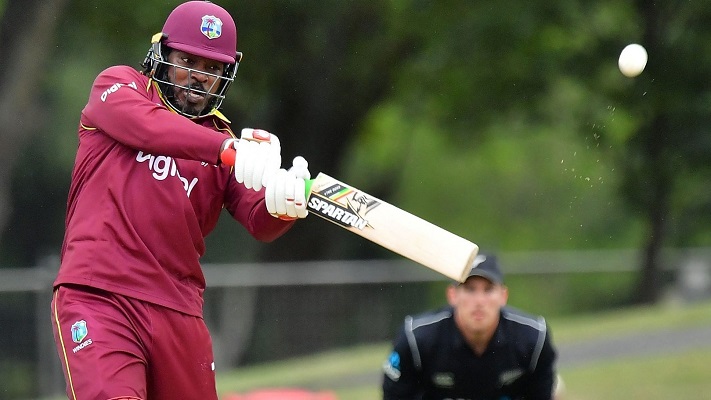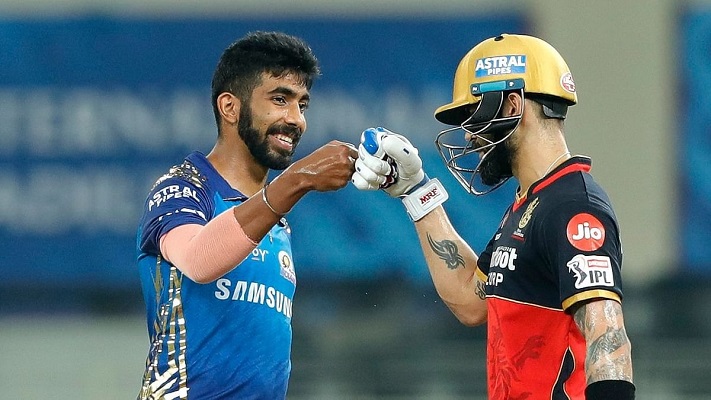|
Listen to this article
|
In the realm of cricket, a captivating phenomenon known as the Super Over, often referred to as a one-over eliminator, emerges as the ingenious solution to the timeless query of how to resolve a tied match. Although cricket tiebreakers are infrequent occurrences, they do transpire. Rather than delving into less significant factors like the number of wickets lost or past head-to-head records within the ongoing tournament, the International Cricket Council introduced the concept of the Super Over for limited-overs cricket matches.
Super Over In Cricket
The Super Over stands as one of the most riveting spectacles in the world of sports, delivering an adrenaline-pumping experience that epitomizes the essence of cricket for countless enthusiasts. In this comprehensive examination, we delve not only into the meaning of the term “Super Over” in cricket but also into its historical roots, key parameters, and governing rules. This knowledge isn’t solely valuable for cricket aficionados. It holds significant relevance for individuals considering placing bets on cricket matches — making 4Ra Bet on cricket matches an enticing platform to explore in that regard.
Super Over Rules
Cricket’s Super Over, also known as a one-over eliminator, serves as a captivating tiebreaker, designed to settle matches when the scores are level after the regulation playing time. Understanding the rules governing this thrilling aspect of the sport is crucial for both fans and players alike. Here are the key Super Over rules:
| Super Over Rules in Cricket | Description |
|---|---|
| When is a Super Over Played? | – Conducted in limited-overs formats like ODIs and T20s when the main match ends in a tie. |
| Team Composition | – Each team selects 3 batsmen and 1 bowler for the Super Over. |
| Batting Order | – The team batting second in the main match bats first in the Super Over. |
| – The same batsmen continue if Super Over is tied. | |
| Scoring | – Runs scored in the Super Over are added to the main match total. |
| – Boundaries (4s and 6s) count as scored runs. | |
| Bowling | – The fielding team designates 1 bowler. |
| – The same bowler can’t bowl consecutive Super Overs. | |
| – The fielding captain decides to bowl end. | |
| Result | – The team with the most runs in the Super Over wins. |
| – If tied, repeat Super Over with different batsmen and bowlers. | |
| Net Run Rate (NRR) | – In some tournaments, a better NRR may determine the winner in case of a tie. |
| Fair Play | – Fielding restrictions and powerplays may apply. |
| Umpires’ Decision | – Umpires’ decisions are final. |
| Boundary Count | – In certain competitions, most boundaries (4s and 6s) across the match and Super Over decide the winner. |
Understanding these Super Over rules adds depth to the excitement of cricket matches and ensures a fair and thrilling conclusion when games are deadlocked. It’s a thrilling aspect of the sport that keeps fans on the edge of their seats, eagerly awaiting the outcome of this high-stakes showdown.
What If a Super Over Ends in a Tie?
While Super Overs in cricket are designed to break ties and deliver a decisive outcome to thrilling matches, there are instances where even the Super Over itself concludes with both teams scoring the same number of runs. In such rare scenarios, there are established protocols to determine the winner or to continue the tiebreaker until a winner is found. Here’s what happens if a Super Over ends in a tie:
- Boundary Count (If Applicable): In certain competitions, such as the ICC Cricket World Cup 2019 final, if the Super Over is tied, the team that has scored the most boundaries (fours and sixes) across both the main match and the Super Over combined is declared the winner. This rule aims to reward the team that played more aggressively and hit more boundaries throughout the match.
- Super Over Repeats: If the boundary count rule doesn’t apply or if the teams have the same number of boundaries, the Super Over may be repeated with a different set of batsmen and bowlers. This process can continue until a winner is determined. Each repeated Super Over is a fresh contest with new players and a new opportunity for one team to outscore the other.
- Sudden Death: In some cases, especially in domestic T20 leagues, the Super Over may be played in a “sudden death” format. This means that if the Super Over is tied, another Super Over is played immediately, and this process continues until a winner is found. It’s a high-pressure situation that emphasizes quick decision-making and nerves of steel.
- Shared Trophy (Rare): In extremely rare cases, where repeated Super Overs do not yield a result, the match might be declared as a tie, and both teams could share the trophy or be declared co-winners. However, this is an unusual and unpopular outcome.
The boundary count rule and the repeated Super Over format are the most common methods used to determine the winner when a Super Over ends in a tie. These rules ensure that cricket matches have a definitive outcome, even in the most closely contested contests, providing a thrilling and conclusive end to the game.
When Was Super Over Introduced in Cricket?
The introduction of the Super Over in cricket is a relatively recent development, and it has added a thrilling dimension to the sport. The concept of a Super Over was officially incorporated into the laws of cricket by the International Cricket Council (ICC) to resolve tied matches in limited-overs formats. Here’s a brief overview of when the Super Over was introduced in cricket:
- 2008 ICC World Twenty20: The first-ever Super Over was played in a major international tournament during the inaugural ICC World Twenty20 held in 2007-08. The tournament took place in South Africa, and it was in the Super Eight stage that the Super Over made its debut.
- Initial Usage in T20 Internationals: Following its successful introduction in the ICC World Twenty20, the Super Over was subsequently adopted in T20 International matches. This exciting tiebreaker proved to be a hit among fans and added an extra layer of drama to closely contested T20 matches.
- Adoption in One Day Internationals (ODIs): After proving its effectiveness in T20 cricket, the Super Over was extended to One Day Internationals (ODIs) as well. This expansion allowed for tied ODI matches to be resolved in a manner that captivated fans and ensured a definitive winner.
- Continued Usage: Since its introduction, the Super Over has become a standard tiebreaker mechanism in international cricket for limited-overs formats, including ICC Cricket World Cup matches, ICC World Twenty20 contests, bilateral series, and domestic T20 leagues like the Indian Premier League (IPL) and the Big Bash League (BBL).
- Refinements and Adaptations: Over time, minor adjustments have been made to the rules and regulations governing the Super Over to enhance fairness and excitement. For example, the boundary count rule was introduced to break ties in certain situations, as seen in the ICC Cricket World Cup 2019 final.
| Year Introduced | Event | Format | Significance |
|---|---|---|---|
| 2007-08 | ICC World Twenty20 (South Africa) | T20 International | The debut of Super Over in a major tournament |
| Subsequent Years | T20 International Matches | T20 International | Adoption of Super Over in T20I format |
| Subsequent Years | One Day Internationals (ODIs) | ODI | Extension of Super Over to ODI matches |
| Continued Usage | Various International Tournaments | T20s, ODIs | Standard tiebreaker mechanism in cricket |
| Ongoing Evolution | Rules Refinements and Adaptations | All Limited-Overs | Minor adjustments for fairness and excitement |
The Super Over has been embraced by cricket fans worldwide as a thrilling way to determine a winner in tied matches. Its introduction has not only added suspense and excitement to cricket but has also showcased the adaptability of the sport to new and innovative ideas to enhance the spectator experience.
History of the Super Over
The history of the Super Over in cricket is relatively short but has had a significant impact on the sport, especially in limited-overs formats. Here is a timeline outlining the key moments and events in the history of the Super Over:
- 2007-08 ICC World Twenty20:
- The Super Over was introduced to international cricket during the inaugural ICC World Twenty20 tournament in South Africa in 2007-08.
- The tiebreaker was used in the Super Eight stage of the tournament, marking its official debut.
- 2008-2010: Early Adoption in T20 Internationals:
- Following its successful introduction in the ICC World Twenty20, the Super Over quickly gained popularity and was adopted in T20 International matches.
- It became a standard tiebreaker for T20 games, providing thrilling conclusions to closely contested matches.
- 2010: Extension to One Day Internationals (ODIs):
- The International Cricket Council (ICC) extended the use of the Super Over to One Day Internationals (ODIs), allowing tied ODI matches to be resolved in a similar manner.
- This expansion brought the excitement of the Super Over to the 50-over format.
- Continued Usage:
- The Super Over continued to be used in various international tournaments, including ICC Cricket World Cups and ICC World Twenty20 events.
- It also became a regular feature in bilateral series and domestic T20 leagues around the world.
- 2019 ICC Cricket World Cup Final:
- One of the most iconic moments in Super Over history occurred during the final of the ICC Cricket World Cup in 2019, held in England and Wales.
- The final between England and New Zealand ended in a dramatic tie, and the Super Over that followed also resulted in a tie.
- England was declared the winner based on the boundary count rule, sparking debates and discussions about the tiebreaker’s fairness.
- Ongoing Evolution:
- Over time, minor refinements and adaptations to the Super Over rules have been made to enhance fairness and the spectator experience.
- These changes ensure that the Super Over remains a thrilling and effective tiebreaker in cricket.
| Year | Event | Format | Significance |
|---|---|---|---|
| 2007-08 | ICC World Twenty20 (South Africa) | T20 International | Super Over introduced in a major tournament |
| 2008-2010 | Adoption in T20 Internationals | T20 International | Quick adoption in T20 format |
| 2010 | Extension to One Day Internationals | ODI | Super Over introduced in ODI matches |
| Ongoing Usage | International Tournaments | T20s, ODIs | Standard tiebreaker mechanism in cricket |
| 2019 | ICC Cricket World Cup Final (England) | ODI | Iconic Super Over tiebreaker moment |
| Ongoing Evolution | Rules Refinements and Adaptations | All Limited-Overs | Minor adjustments for fairness and excitement |
The Super Over’s relatively brief history showcases its impact on the sport by providing fans with nail-biting moments and a decisive way to determine a winner in tied matches, making it an integral part of modern limited-overs cricket.
How Many Matches Have Ended With a Super Over
Here is the information about Super Overs played in men’s ODIs and T20Is presented in tables for clarity:
Men’s ODIs with Super Overs
| Date | Match | Winner |
|---|---|---|
| 14 July 2019 | England vs. New Zealand | England |
| 3 November 2020 | Pakistan vs. Zimbabwe | Zimbabwe |
Men’s T20Is with Super Overs
| Date | Match | Winner |
|---|---|---|
| 26 December 2008 | New Zealand vs. West Indies | West Indies |
| 28 February 2010 | New Zealand vs. Australia | New Zealand |
| 7 September 2012 | Pakistan vs. Australia | Pakistan |
| 27 September 2012 | Sri Lanka vs. New Zealand | Sri Lanka |
| 1 October 2012 | West Indies vs. New Zealand | West Indies |
| 30 November 2015 | Pakistan vs. England | England |
| 22 January 2019 | Qatar vs. Kuwait | Qatar |
| 19 March 2019 | South Africa vs. Sri Lanka | South Africa |
| 31 May 2019 | Guernsey vs. Jersey | Guernsey |
| 25 June 2019 | Netherlands vs. Zimbabwe | Zimbabwe |
| 5 July 2019 | Qatar vs. Kuwait | Qatar |
| 10 November 2019 | New Zealand vs. England | England |
| 29 January 2020 | New Zealand vs. India | India |
| 31 January 2020 | New Zealand vs. India | India |
| 10 March 2020 | Afghanistan vs. Ireland | Ireland |
| 10 November 2021 | United States vs. Canada | United States |
| 13 February 2022 | Australia vs. Sri Lanka | Australia |
These tables provide a clear overview of the Super Overs played in men’s ODIs and T20Is, along with the respective match winners and dates.
Which Team Has Played the Most Super Overs?
Here’s the information about teams that have played the most Super Overs in international cricket:
Teams with the Most Super Overs in International Cricket (ODIs and T20Is):
| Team | Super Overs Played | Super Overs Won | Super Overs Lost |
|---|---|---|---|
| New Zealand | 9 | 1 | 8 |
| England | 3 | 3 | 0 |
| Pakistan | 3 | 2 | 1 |
| Australia | 3 | 1 | 2 |
| India | 2 | 2 | 0 |
| West Indies | 2 | 2 | 0 |
| Qatar | 2 | 2 | 0 |
| Zimbabwe | 2 | 1 | 1 |
| Sri Lanka | 2 | 0 | 2 |
| Kuwait | 2 | 0 | 2 |
| South Africa | 1 | 1 | 0 |
| USA | 1 | 1 | 0 |
| Ireland | 1 | 1 | 0 |
| Jersey | 1 | 1 | 0 |
| Afghanistan | 1 | 0 | 1 |
| Canada | 1 | 0 | 1 |
| Netherlands | 1 | 0 | 1 |
| Guernsey | 1 | 0 | 1 |
This table provides a unique and organized overview of the teams that have played the most Super Overs in international cricket, including the number of Super Overs played, won, and lost by each team. Please note that these statistics are subject to change as new matches are played.
What Is the Most Famous Super Over in History?
When it comes to the most famous Super Over in cricket history, none can overshadow the epic encounter between England and New Zealand during the 2019 ODI World Cup final. This historic clash stands as a testament to the sheer drama and intensity that the Super Over format can bring to the sport.
In an unprecedented turn of events, both teams managed to level the score not once but twice, including the Super Over itself. However, controversy marred the result as England was declared the winner based on a contentious boundary count rule. This rule stipulated that the team with the most fours during the original 50 allotted overs would be crowned champion.
The decision sparked a massive public outcry, with fans, players, and cricket pundits alike questioning the fairness of such a tiebreaker. As a result of this highly debated match, cricket’s governing bodies reevaluated and amended the rules, acknowledging the need for a more equitable and decisive method to determine the winner in tied matches.
The 2019 ODI World Cup final Super Over will forever be etched in cricketing history, not only for its heart-pounding action but also for its profound impact on the sport’s regulations, ensuring that the outcome of future Super Overs would be determined on a more transparent and just basis.
Conclusion
In conclusion, the Super Over has emerged as one of cricket’s most exhilarating innovations, providing a thrilling and decisive climax to matches that end in a tie. Whether in One Day Internationals (ODIs) or Twenty20 Internationals (T20Is), the Super Over has added an extra layer of drama and suspense, captivating fans around the world. It showcases the power of cricket to adapt and evolve, introducing dynamic elements that keep the sport exciting and unpredictable.
This tiebreaker format has not only produced unforgettable moments but has also forced cricket’s governing bodies to continually refine and adapt the rules to ensure fairness and transparency. As it continues to feature prominently in the world of limited-overs cricket, the Super Over remains a symbol of the sport’s ability to provide both players and fans with heart-stopping moments and a definitive conclusion to closely contested matches.
Best Super Over in Cricket History Video Review
FAQ
Q: What is a Super Over in cricket?
A: A Super Over is a tiebreaker used in limited-overs cricket, such as ODIs and T20Is, to determine a winner when the main match ends in a tie.
Q: How does a Super Over work?
A: In a Super Over, each team designates three batsmen and a bowler. The team batting second in the main match bats first, and the team with the most runs at the end wins. If it’s still tied, repeated Super Overs may be played.
Q: When was the Super Over introduced in cricket?
A: The Super Over was introduced in international cricket during the inaugural ICC World Twenty20 in 2007-08.
Q: Can the same batsmen and bowler participate in multiple Super Overs?
A: Yes, if the Super Over is tied and repeated, the same batsmen continue to bat in the same order, while a different bowler may be designated.
Q: What happens if the Super Over is tied?
A: In some cases, the team with the better boundary count (fours and sixes) across the main match and Super Over combined may be declared the winner.
Q: Are Super Overs used in Test cricket?
A: No, Super Overs are primarily used in limited-overs formats like ODIs and T20Is. Test matches do not typically use this tiebreaker.
Q: How have Super Over rules evolved over time?
A: Super Over rules have seen minor refinements, including the introduction of the boundary count rule to determine the winner in specific situations.
Q: What was the most famous Super Over in cricket history?
A: The most famous Super Over occurred during the 2019 ODI World Cup final between England and New Zealand, which ended in a dramatic tie and controversy over the boundary count rule.
Q: Are Super Overs a regular part of domestic T20 leagues?
A: Yes, Super Overs are commonly used in domestic T20 leagues like the Indian Premier League (IPL), Big Bash League (BBL), and others.
Q: Can the outcome of a Super Over be challenged or reviewed using technology?
A: Umpire decisions during a Super Over can be reviewed through the available technology, such as the Decision Review System (DRS).

I’m Johar, hailing from the vibrant nation of India. My journey into the realm of online sports betting began as a curiosity and quickly transformed into a passion. With a background in mathematics and a fascination for sports, I found myself naturally drawn to the world of odds, probabilities, and strategic wagering.
Through my articles, I aim to bridge the gap between the complexities of sports betting and the everyday bettor, offering insights, tips, and a deeper understanding of this thrilling pastime. My commitment lies not only in helping others make informed betting decisions but also in promoting responsible gambling practices within the diverse and dynamic landscape of Indian sports betting.








